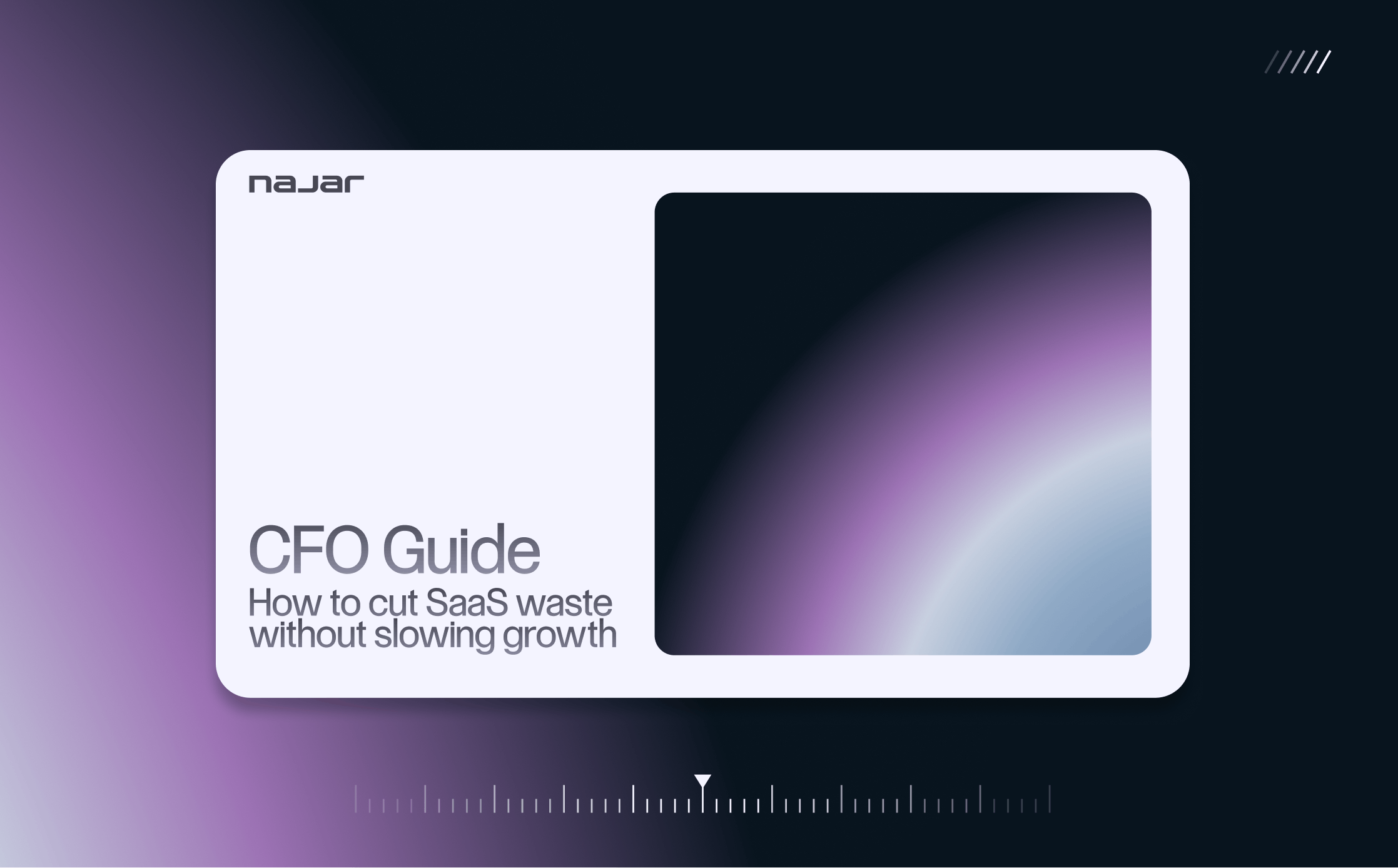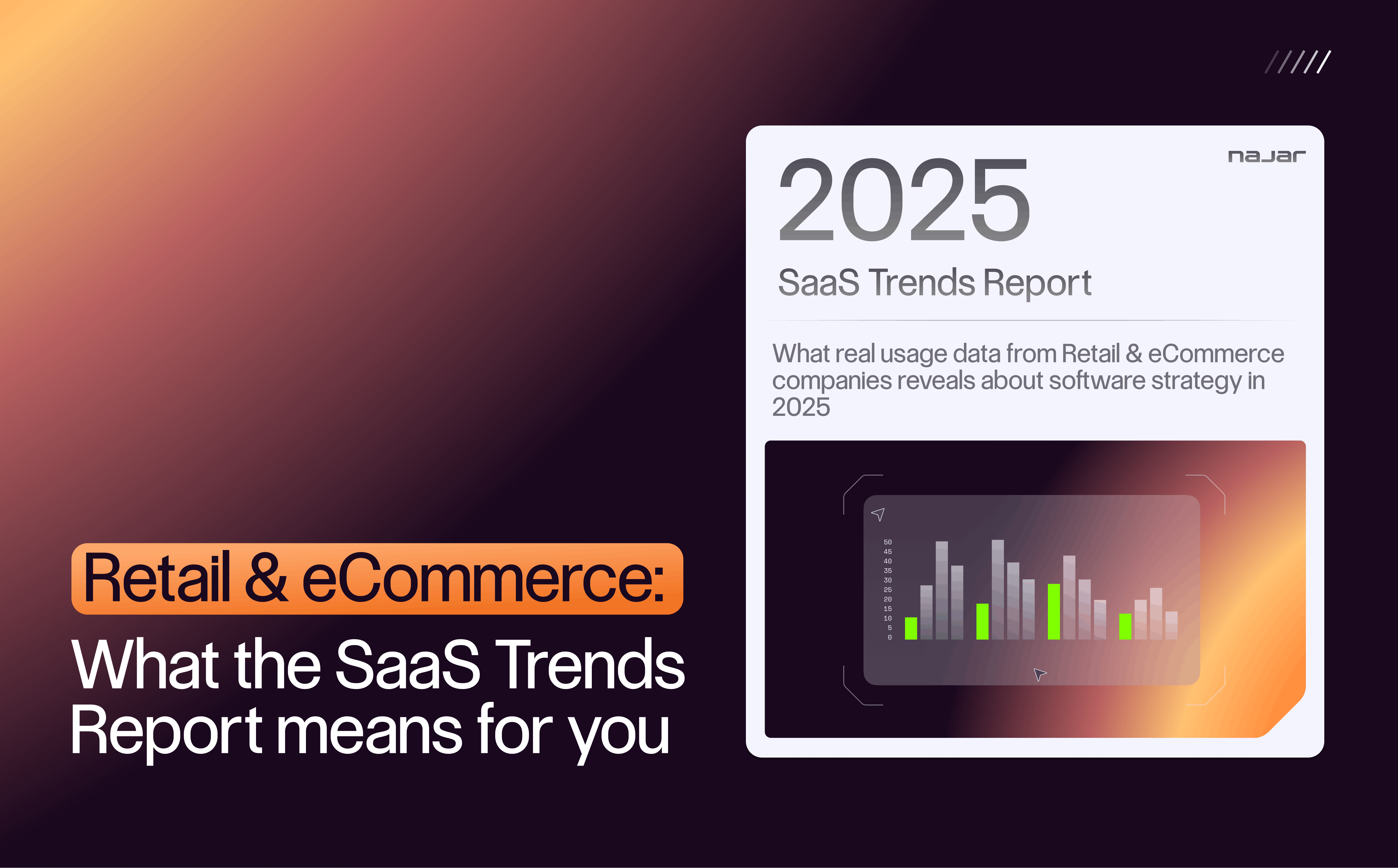Businesses are increasingly dependent on IT solutions - including SaaS tools - to manage their day-to-day activities. A 2023 Gartner study shows that global SaaS spending is set to increase by 21.7% in 2023 compared with 2022.
A solid SaaS procurement method offers many advantages, such as optimizing software usage, reducing costs and streamlining production processes. Ultimately, all this helps to improve a company's overall operational efficiency.
In today's fast-growing cloud computing market, it's essential to know how to negotiate with your IT suppliers to get the best deals and benefit from services that match your needs.
In this article, Najar gives you a foolproof method for negotiating with your IT suppliers in 2023.
The IT supplier market in 2023
IT suppliers provide IT services and solutions, helping companies to meet their technology needs. In the context of the digital transition, the role of IT suppliers is also changing: their focus has shifted from providing software to be installed on site, such as Oracle Database, to providing software as a service (SaaS), such as Salesforce.
When it comes to SaaS, the IT supplier's main task is to manage the cloud infrastructure. Its main mission is to ensure that servers, storage, databases and networking capabilities are running smoothly to best meet customer demand.
Another key role of the IT supplier is to provide companies with reports and software inventories tailored to their needs. This data can be used, for example, to optimize costs by avoiding duplication of SaaS software.
Prepare your negotiations with IT suppliers
To best negotiate your SaaS contracts with your suppliers and ensure that you're paying exactly for the services you need, it's necessary to carry out a thorough analysis of your needs upstream.
Ask yourself who your users are, what your business objectives are, what your budget is and so on.
A contract monitoring and procurement service can help you prepare for these negotiations, and ensure that SaaS solutions are optimally managed within your organization.
This involves providing information on market trends, so that you can negotiate with an awareness of comparative advantages, as well as ensuring that contracts signed with your suppliers are contractually compliant.
In any case, whether you are accompanied or not, here are the elements you need to analyze in order to prepare upstream for negotiations with your various IT suppliers:
- Evaluate your costs: by comparing the costs associated with the SaaS management contract (subscription fees, additional fees, customization and support costs) with the added value you get from the service provided, you'll be able to perceive opportunities to renegotiate rates in line with your objective.
- Examine the terms and conditions of your contract: by reviewing clauses that could be modified, such as termination, automatic renewal, confidentiality or data security clauses.
- Verify compliance of SaaS services: by analyzing actual SaaS performance against contractually agreed levels. Identify any deviations in response or resolution times to assess the impact on your company's operations.
Build a solid negotiation strategy
The second and most important step is to establish a sound negotiation strategy. Well-defined objectives within your company provide a solid foundation for negotiations, facilitating communication between both parties.
A good understanding of your company's internal ecosystem can help you build your negotiation strategy.
- Identify gaps: shadow IT* data can help you identify missing functionalities within your current software.
Determine negotiating levers: for example, if your employees are using competing products, this is an argument for requesting preferential rates or specific features in the contract.
*Shadow IT refers to the use of software, technology or IT services by employees without the approval of the company's IT department.
Don't forget to optimize your software costs. By identifying SaaS tools that offer similar functionality, try to consolidate these tools into a single solution to reduce licensing and maintenance costs.
Conversely, if your business requires several SaaS licenses, consider negotiating with the IT provider for volume discounts: with a high user potential, you'll surely be able to negotiate preferential rates.
Promote a relationship of trust with your suppliers
Establishing a positive relationship with the IT supplier is crucial when negotiating SaaS tools. By maintaining a relationship of trust with the supplier, your collaboration will be more effective. You'll also be more likely to receive quality technical support, or to be the first to know about the latest updates.
By working collaboratively, you establish a fruitful long-term relationship. Mutual trust will enable you to resolve SaaS-related issues quickly. This collaborative approach is a win-win for both parties: the supplier can find solutions tailored to your company's real needs. Conversely, your feedback can lead to long-term software improvements.
Here, then, are a few tips for promoting effective communication during negotiations with your supplier:
- Active listening: practice active listening and ask pertinent questions to clarify important points.
- A clear articulation of requirements: beforehand, don't hesitate to revise your requirements so that they can be met during negotiations. You can also prepare a detailed list: this way, you'll be able to communicate them concisely to your supplier.
- Precision: avoid vague terms that could lead to ambiguity with your contact. The more you communicate with concrete examples, the more likely your supplier will be able to meet your objectives.
Ensure the flexibility and scalability of your SaaS contracts
To come out on top in negotiations with your IT suppliers, you also need to ensure that the contracts you negotiate are flexible. The requirements of certain sectors evolve rapidly, and your company's priorities may change.
Flexibility is therefore a prerequisite for being able to adjust your supply of SaaS tools in line with these changes: your contract should, for example, include the rapid increase or reduction of storage capacity in line with your business volume.
You should also check that licenses are scalable. In other words, find out whether the number of licenses can be increased or decreased according to your company's real needs. This will enable you to maximize your profits by only paying for what you actually use, but also to be responsive to market needs by adding or removing licenses according to the requirements of the moment.
Don't fall into the trap of automatic contract renewal. To counter this risk, you can plan ahead to reassess your needs if necessary.
Comparing the different offers from SaaS providers on the market can also be a solution to ensure that renewal conditions are favorable to you.
Follow market trends
A final tip to help you negotiate with IT suppliers is to stay informed about the SaaS market. To keep abreast of the latest trends in SaaS software, you can refer to Gartner publications, follow the SaaS Mag page, or attend conferences such as Saastr.
A better understanding of the sector will enable you to make informed decisions when negotiating with your IT suppliers. This is because you'll be able to establish the comparative advantages of each supplier, and get closer to the one that best meets your needs.
What's more, a sound knowledge of the sector will enable you to negotiate from a position of strength. And ultimately, you'll be able to take advantage of the best opportunities in terms of cost!
Negotiating with IT suppliers now holds no secrets for you. By applying the above methods, you can ensure that your SaaS contract meets your needs, no more, no less.
These discussions with IT suppliers are crucial to your company's performance. It's therefore important to identify your needs, so that the terms negotiated are flexible and can be quickly adapted as your business evolves.
Let Najar support you in purchasing and managing software tailored to your business needs, and optimize your use of SaaS!



